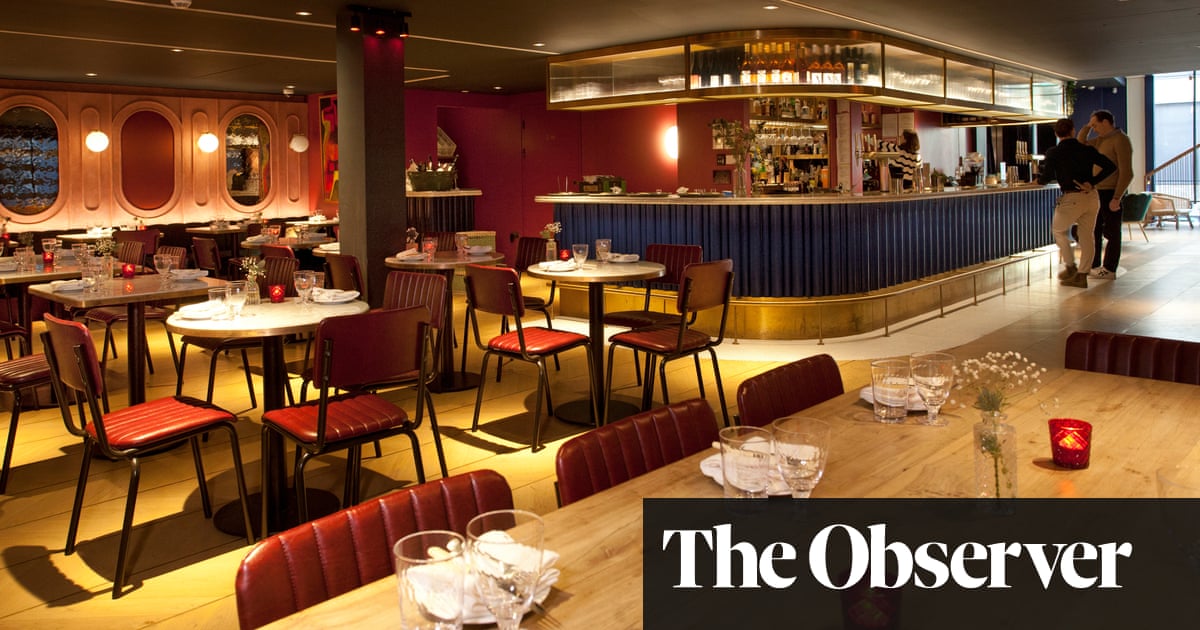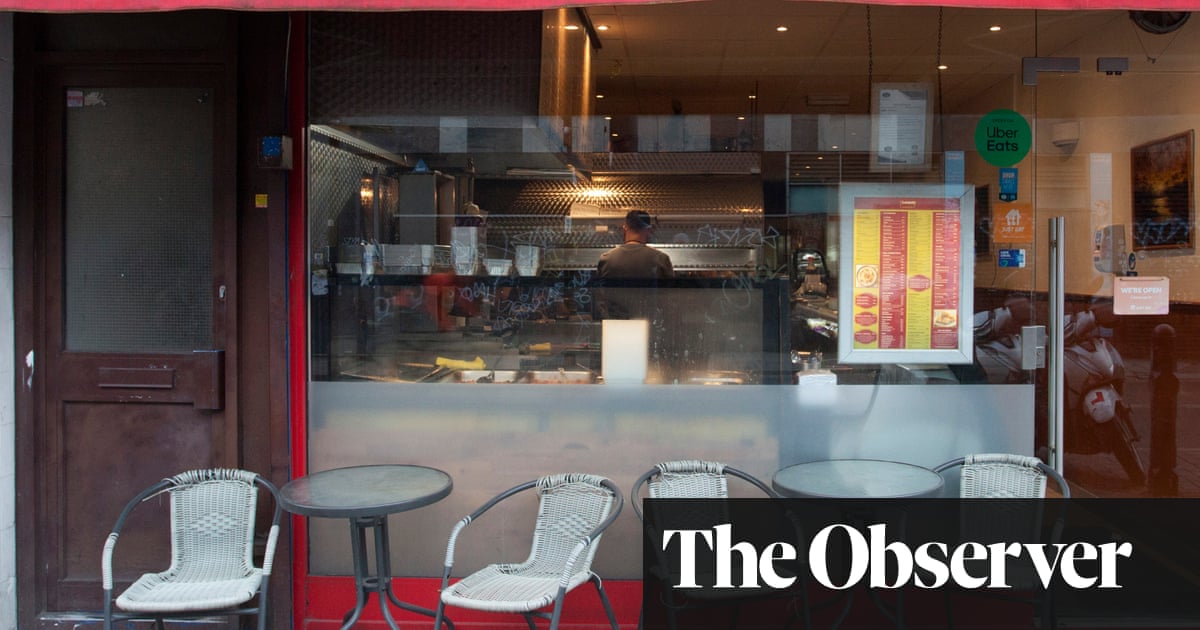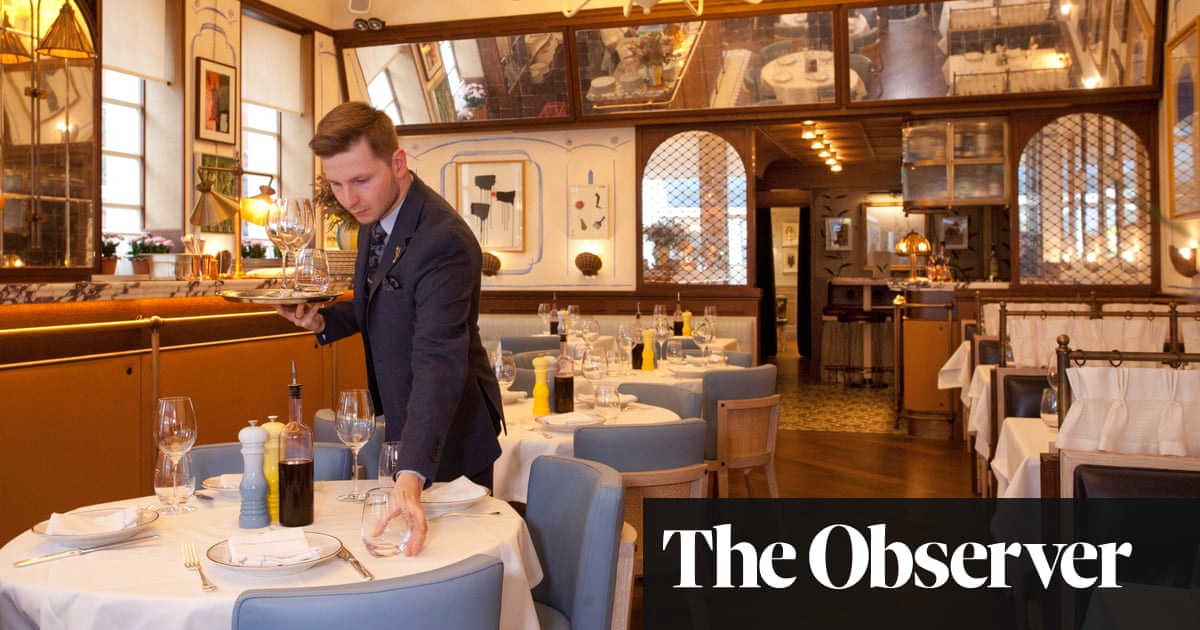
The Hero, 55 Shirland Road, London W9 2JD. Snacks £6-£13, starters £9-£14, mains £13-£18, desserts £8, wine from £32 a bottle
The Hero, a pub in London’s Maida Vale, is currently a middle-class rave fuelled by a crisp gavi and banging scotch eggs. You will hear it before you see it, as the sounds of the west London mob outside, smoking like it’s 1992, float towards you down tidy streets of wedding cake stucco. To get a sense of the place, however, let’s first pop into the gents at the back. There, standing side by side at the urinals, are two chaps who are not quite young but also not quite middle aged: tousled hair, many opinions, saggy jeans that have never seen better days because they came out of the box like this. One of them says: “I think it’s time I tried the country. I love the country.” The other says: “No, no, I’m all about the city. So many possibilities.”
Listening in from the cubicle, like some filthy Stasi agent, I become aware that these are not my people and I am not theirs. Recently, and for a few weeks to come, I have, for reasons beyond my control, been confined to the capital. My wanderings have made me acutely conscious of London’s tribes. The crowd at Peckham’s Montpelier a few weeks ago, for example, were very much my people; they literally resembled my south-east London neighbourhood friends. The punters at Gaia were recognisable only to each other, as long as they’d met since their last visit to the cosmetic surgeon.
And then there’s this raucous west London herd. They have taken to the re-opening of the Hero like small kids to a sweetie pick-and-mix and they really are very much country and city. The team behind the Hero also has the Bull at Charlbury in the Cotswolds, and the Pelican in Notting Hill. They specialise in the sort of artful shabby chic that the fading gentry adore, only without the smell of damp dog. They haven’t met a wood panel they couldn’t sand, a wall they couldn’t rag roll. The saloon bar look is very much: “I got left this pub by a distant relative and when I get some cash together, I’ll decorate.” It takes a lot of money to make it look this make-do-and-mend.
Right now, the unflustered staff are somehow managing to make crowd control look like a normal restaurant service, which it isn’t. It’s bedlam. But if you manage to get a table in the ground-floor bar, what you’ll get is a menu of very nice, simple things. It’s an extremely decent take on the modern pub repertoire. The snacks list includes cocktail sausages, a cheese toastie and that scotch egg, which is served warm and kept in place on the plate by a dollop of sinus-clearing Colman’s English mustard. The sausage-meat casing has the right peppery hit, and the yolk is at an ideal gooey state where it could be spreadable on toast like jam. It’s also hilariously, deeply orange, a signifier less of quality than the fact the farmer fed their chickens orange stuff, rich in beta carotene.
We have a plate of deep-glazed lamb ribs, cooked long and slow enough that they pull easily from the bone. There’s also a whole roast quail which is a pleasing redefinition of the word “snack”. Would you like a nibble? Oh yes please, I’ll have a whole game bird, but just a small one. Quails can be tricky blighters; so wee, that they can go from perfectly cooked to shoe leather in a wistful glance out the window. This one is bang on. We treat that as one of our starters alongside a salad of little gem dressed with a rubble of crisped then crumbled bacon, and soft and oily batons of smoked eel. It’s a caesar salad that’s been at the dressing-up box, and come out looking fabulous.
Mains, priced in the mid-teens, include fishcakes, sausage and mash, and ham, egg and chips. It’s well-heeled comfort food, which is making a virtue of its familiarity. The nearest thing to an innovation is the shepherd’s pie, made with shredded rather than minced lamb. It is a dense, gravy-rich filling, beneath a beautifully piped, crisp potato topping. If you were looking for something to soak up the beer, arguably the point of all pub food, this would do the job.
And then there’s the humble-sounding cheese and onion pie, one of those bottom-of-the-bill dishes which comes out on to the stage and steals the show. Partly it is the filling, a mixture of Red Leicester, West Country Cheddar and Colston Bassett Stilton, merged with soft ribbons of onion. But, really, it’s the slumped, golden pastry, though we should use that term loosely. It is the shortest of shortcrusts; a gorgeous miracle of butter and flour, which holds together more out of good manners than anything to do with kitchen chemistry. On the side is a sharply dressed parsley salad, the perfect foil.
Clearly pastry is a strength because, alongside a serviceable sticky toffee pudding, there’s an astonishingly good lemon tart: exquisitely thin, cracker-crisp pastry holds a zippy lemon crème of ineffable lightness and wobble. The last time I had one this good was in the early 00s at the Riverside Brasserie, a short-lived side project from Heston Blumenthal, who had gone through dozens of iterations to get it right. Really, it’s that good. And now I am raving, like a glitter-crusted Swiftie. Quite right, too. I ask who the pastry chef is and am told it’s a group effort by the kitchen, under head chef Ed Baillieu. Bravo!
I know this pub rather well, as it happens. In 2018, when it was the Hero of Maida, I held my last supper here, as the conclusion to the book I was writing on the subject. The then presiding chef was Henry Harris now of Bouchon Racine. He prepared oysters, bacon sandwiches and a terrific Mont Blanc for 40 of us in the first-floor dining room. The night we visit, this space is a comfortably appointed ghost restaurant, complete with curving leather-clad booths and linen-laid tables. This will eventually be the Grill, serving whole fish and rare-breed chops, hot off the coals. Doubtless it will be grouped with the Devonshire in Soho, as proof that pubs are once more a thing, as if they ever stopped being so. For now, though, the real action here is on the ground floor, where they have made the sweetly familiar blissfully new again. Just be prepared to bundle through an awfully polite mosh pit to get to it.
News bites
First up, news that a restaurant you may not have known had opened, has now closed. All’onda, which was on London’s Charlotte Street, only started serving its risotto-based menu in early May. We learned of its closure when our request to visit to take pictures which would illustrate my rave of a review was declined. They had closed just two working days after my lunch there. It’s a crying shame. Chef Andrea Granzarolo’s risottos were as delicious as they were eye-poppingly beautiful and the £39 lunch menu was a steal for food of this quality. I wish Granzarolo and his whole team the best for whatever they do next.
El Celler De Can Roca, one of the world’s leading gastronomic points of pilgrimage, is to open its first restaurant outside its native Spain, in Scotland. The Roca brothers, who hold three Michelin stars and have topped the 50 best list twice, will open a new venture on the estate of whisky distillery Macallan in Speyside later this summer. The dining room will have 30 seats and will serve a nine-course tasting menu, which will be ‘a culinary exploration of Macallan’ (cellercanroca.com).
The seemingly unstoppable rise of fried chicken continues with news that the American born Popeyes chain is planning to open 15 more branches here this year bringing them to a total of 50 in the UK. The 50th will be on Sauchiehall Street in Glasgow, with others planned for Aberdeen and Braehead and at Belfast’s Forestside shopping centre, its first in Northern Ireland (popeyesuk.com).












